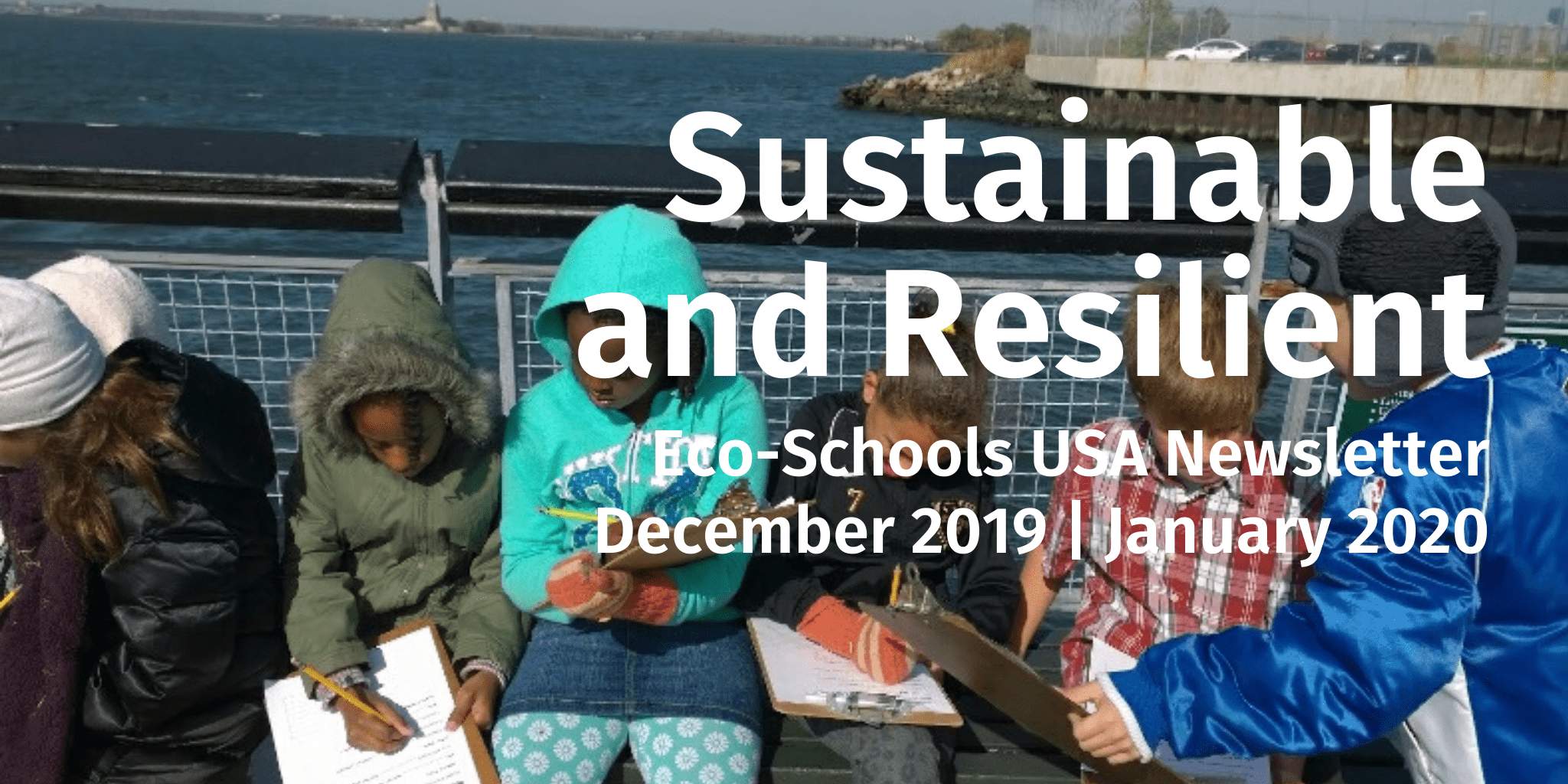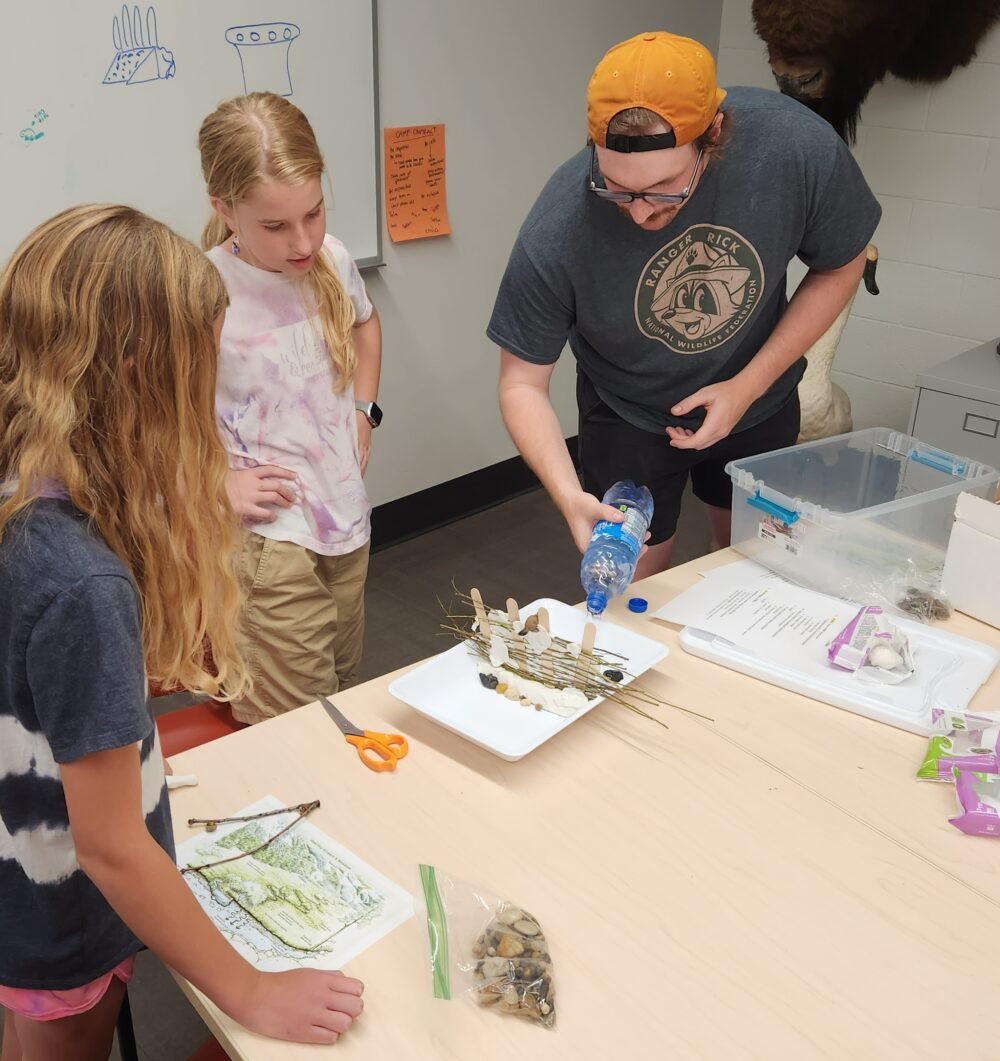We have much more to do and your continued support is needed now more than ever.
Eco-Schools USA December/January Newsletter

“The values we care about the deepest, and the movements within society that support those values, command our love. When those things that we care about so deeply become endangered, we become enraged. And what a healthy thing that is! Without it, we would never stand up and speak out for what we believe.”
The World According to Mister Rogers
Our family traditions and cultural celebrations are unique parts of our lives and contribute to our identity. Our hope, as 2019 comes to a close, is for you to enjoy multi-generational and multi-traditional events and celebrations with your friends and family. We also hope you’ll take time to disconnect a bit digitally and reconnect with the sights, sounds and feelings of nature in your community or wherever you may travel. Safe journey.

In This Edition
- Our Global Community: 25 Years of Eco-Schools
- Pathway Focus: Biodiversity
- Schoolyard Habitats® in Winter
- Current Events | In the Classroom: Educating a Future Generation of Stewards
- Learning About Wildlife: Impacts of De-Icing to the Environment
- Green Grants and Opportunities
Our Global Community: 25 Years of Eco-Schools
Eco-Schools is an international network of schools, each striving to improve their environmental footprint, build student leadership, and support sustainability in the community. The Foundation for Environmental Education’s (FEE) Eco-Schools program is an official partner of UNESCO (United Nations Educational, Scientific, and Cultural Organization) and a key partner in the Global Action Program (GAP) on Education for Sustainable Development. We are proud to be a part of the Eco-Schools 25 year legacy.
Pathway Focus |Biodiversity
GOAL 14
Conserve and sustainably use the oceans, seas and marine resources
GOAL15
Sustainably manage forests, combat desertification, halt and reverse land degradation, halt biodiversity loss
During the months of December and January, we turn our focus to the Biodiversity Pathway. Teachers can make interdisciplinary connections with subjects like Geography (examining the relationships connecting biodiversity to culture) and Math (by calculating the number of different kinds of plants in an area). Students can study the relationships between a decline in biodiversity, habitat loss and climate change. Eco-Action team members of all ages can use the grade-banded audits as the basis to observe and identify trees, plants, and animals found on school grounds. Then develop and implement an action plan to improve biodiversity in specific locations around the school or in the community.
Community awareness about loss of habitat and biodiversity decline provide opportunities for student leaders to emerge and drive initiatives for change. At the global level, connections can be made via Global Goal 14 Life Below Water, to better understand the global importance of marine and coastal biodiversity, and/or learning about Global Goal 15, Life on Land, provides students opportunities to understand how the loss of pollinators impacts the global food economy.
Follow @EcoSchoolsUSA on social media as we share tips and information related to our monthly pathway highlight and how to take action for #GlobalGoal14 and #GlobalGoal15. Educate your school and local community through school announcements, news programming and/or monthly school communications. #BiodiversityPathway
Schoolyard Habitats® in Winter
Don’t let a little cold weather keep you and your students from outdoor learning! Here’s a few ideas for the winter months:
- Use the Animals in Winter page from the monthly Ranger Rick® Educator’s Guide for an fun, outdoor activity for younger students.
- Now is the time to start milkweed. This article has a few tips for how to grow perennial milkweed from seed.
- Search for age-appropriate citizen science opportunities using SciStarter. The Project Finder tool provides ways to filter by items such as topic, location, or age.
- Encourage interested students to participate in a winter event like the Audubon’s 120th Christmas Bird Count, between December 14 and January 5th. Find more information and a map of participating locations.
- Explore the Schoolyard Habitats® Pathway and map out a path to a Bronze, Silver or Green Flag Award by the end of the school year.
Explore the Pathway!
In the Classroom | Current Events
At the National Wildlife Federation, we have a Common Agenda for Wildlife which includes our commitment to inspiring the next generation of conservationists. This was highlighted in the recent National Wildlife Federation blog, Educating a Future Generation of Stewards. Educators in Indiana and upstate New York are using project-based learning activities within the framework of the Eco-Schools USA program. These activities enhance problem-solving skills in the classroom, support student-led community action projects, and help facilitate school sustainability initiatives such as developing a compost program in support of an indoor garden classroom. Read more about the impact of the Alcoa Warming-Waste-Water-Watts and Wildlife (Alcoa W5) program.
READ THE BLOG!
Learning About Wildlife
This time of year, many of us are all too familiar with the large salt trucks that we see dropping chemicals up and down our roads. We all can appreciate the efforts to make driving safer before, during, and after a snow or ice storm. But what impact do these de-icing mixtures have on the environment and wildlife once they begin melting and washing across the watershed? Teachers can use this month’s Ranger Rick® Adventures as a way to introduce the topic to students, and encourage a discussion and additional research. Be sure to download the free Ranger Rick® Educator’s Guide for December 2019/January 2020. It includes directions for a simple experiment testing the effectiveness of de-icers using common ingredients like kosher salt and pickle juice.
Green Opportunities and Grants
- Take Climate Action by making a pledge for a positive action for the planet. Learn more
- The World’s Largest Lesson – Goal 14: Life Below Water | Goal 15: Life on Land
- 2020 Saving Endangered Species Youth Art Contest (includes ideas for classroom discussion topics and art lesson plan)
- Plan and Register for a Green Apple Day of Service; projects can happen throughout the school year
- 2020 Farm to School Grant Request
- Bow Seat Ocean Awareness Contest, Climate Hope: Transforming Crisis; Enter by 6/15/20
- Captain Planet Foundation Grant Opportunities
- Monarch Watch Milkweed Grants
VIEW OPPORTUNITIES























